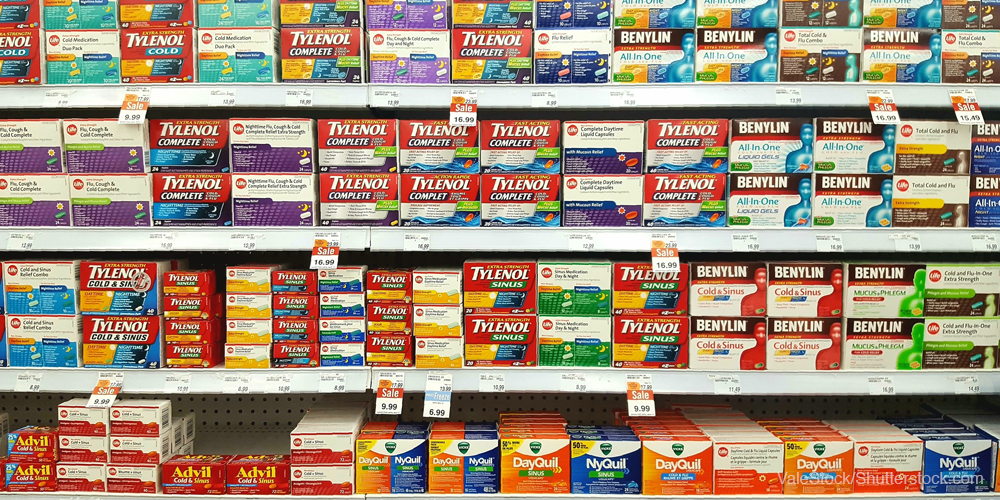OTC Meds Save Billions
How over-the-counter meds keep patients healthier.

The availability of over-the-counter (OTC) medicines saves the U.S. healthcare system a total of $146 billion annually, according to a new study.
Specifically, cost savings due to the availability of OTC medicine came from two major categories: nearly $52 billion in drug cost savings (lower-priced OTCs versus prescription drugs) and nearly $95 billion in cost savings due to avoidance of clinical visits, according to the results of a study released by the Consumer Healthcare Products Association (CHPA).
The study examined the value created by OTC medicines to the U.S. healthcare system. The study determined the value of OTC medicines examining nine major therapeutic categories of OTC medicines, comparing cost relative to alternatives, such as prescription drugs and clinical visits. It also determined the value of OTC medicines by estimated cost savings across insurance segments (i.e., commercial plans, Medicare, Medicaid, cash) and by OTC category.
The researchers examined nine categories of the most common self-treatable conditions representing the majority of OTC medicine purchases:
- Allergy
- Analgesics
- Anti-fungals (both foot and vaginal)
- Cough/cold/flu
- Lower gastrointestinal (GI)
- Medicated skin (first aid and anti-itch)
- Sleep aids
- Smoking cessation
- Upper GI
Related: Formulary Drug Exclusions on the Rise: What Health Execs Should Know
“OTC medicines are a cornerstone of the U.S. healthcare system,” according to David Spangler, senior vice president, policy, and general counsel at CHPA. “Without OTC medicines, 90% of consumers would seek professional medical treatment for minor ailments, causing an unnecessary burden on the healthcare system.”
In addition, the study found:
- OTC products are a critical first line of defense against ailments, injuries and even chronic diseases, with U.S. households spending on average $442 annually on these treatments.
- OTC medicines provides relief for an estimated 27 million people who otherwise would not seek treatment-over 13 million Americans for allergies alone.
- OTC medicines offer $34 billion in potential productivity benefits from avoided doctor’s office visits and time not having to be away from work for medical appointments.
Across the four categories of insurance segments within the healthcare system nearly half of the $146 billion in value was generated within the commercial market. Approximately $73.6 billion, or 50.3% of total savings, were captured by commercial plans, according to the study.
“This is particularly relevant to commercial plans and cash-based payments from high-deductible plans, as those segments gain greater value per patient compared to government-sponsored plans,” Spangler says.
While every dollar spent on OTCs yielded overall savings of $7.20, some therapeutic categories provided significantly greater savings, according to the study. For example, each medicated skin dollar provided $19 in savings, and each antifungal dollar provided over $11 in savings.
“The bottom line is that when consumers use OTC medicines to treat or relieve symptoms, they feel better and can be more productive,” Spangler says.
Extending the Capabilities of the EHR Through Automation
August 2nd 2023Welcome back to another episode of "Tuning In to the C-Suite," where Briana Contreras, an editor of Managed Healthcare Executive, had the pleasure of chatting with Cindy Gaines, chief clinical transformation officer at Lumeon.
Listen
Automate Your Practice's Workflows with These 5 Tools
October 4th 2023To maintain patient satisfaction and regulatory compliance and reduce potential clerical errors while maintaining high productivity, you can ease your staff’s burdens by automating your practice’s workflows and empower your staff to do more in less time.
Read More